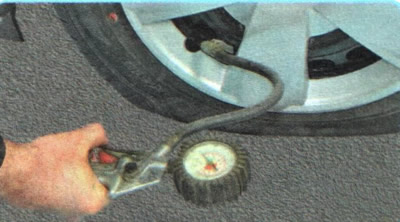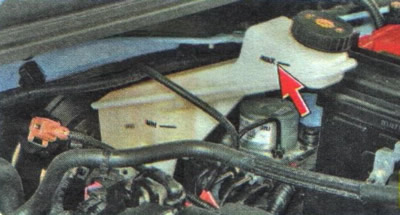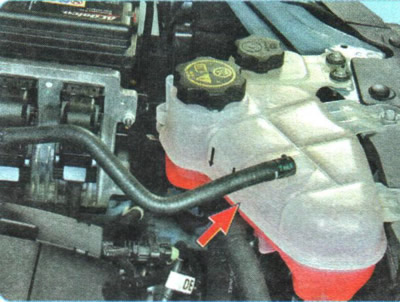1. Approaching the parking lot, pay attention to whether there are any oil or operating fluids under the car. If possible, fix the leak before leaving.
2. Walk around the vehicle and check the following:
- set of removable parts (wiper blades, wheel covers, etc.);
- integrity of body glass, headlight lenses and lanterns. Do not put off replacing broken diffusers. Replace cracked body glass as soon as possible;
- tire condition. Radial tires have soft sidewalls, so tires with rated inflation pressure look flat. Remember their appearance (draft);
- presence and condition of license plates.

3. At least once a month, check the air pressure in the tires and, if necessary, bring it up to the recommended pressure for this type of tire. The difference in pressure values in the tires of one axle of 0.2-0.3 kgf / cm2 can worsen the handling parameters, smoothness of the car and lead to unwanted skidding or drifting when braking. Due to the reduced pressure in the tires, the tread wears out faster and more fuel is consumed;

4. Open the hood and check the oil level in the crankcase, top up if necessary.

5. Check the brake fluid level in the reservoir of the hydraulic drive of the brake system.
WARNING: Although the master cylinder reservoir has a built-in fluid level sensor, we recommend that you visually check the level before each ride.

6. Check the fluid level in the expansion tank of the engine cooling system. If necessary, add fluid to the norm.

7. Check the operation of the windshield wiper and washer. If necessary, add fluid to the washer reservoir. In the cold season, clean the windows from frost, snow or ice.

8. Check the operation of the parking brake (see «Checking the parking brake»).

9. Check up serviceability of a sound signal.
10. Check the operation of the headlights, rear lights, additional brake light and direction indicators. Replace defective lamps (see «Lamp replacement»).
11. Check the operation of instrumentation.
12. Before driving on a stationary vehicle, be sure to check the operation of the brake system by depressing the brake pedal. If the pedal without resistance «failed» to the floor, then the brake system is faulty. The operation of such a vehicle is prohibited.
13. Make sure that items carried in the vehicle are stowed in the appropriate compartments or pockets and securely fastened.
14. Before driving, make sure all doors are securely closed.
15. Before a long trip and after a long break in operation, check the condition of the spare wheel, complete the car with tools and accessories.
16. In case of a malfunction, make a decision (subject to the requirements of the Rules of the road) about starting a trip or repairing a car.
Checks are described in detail in the subsection «Daily Maintenance (EO)».
